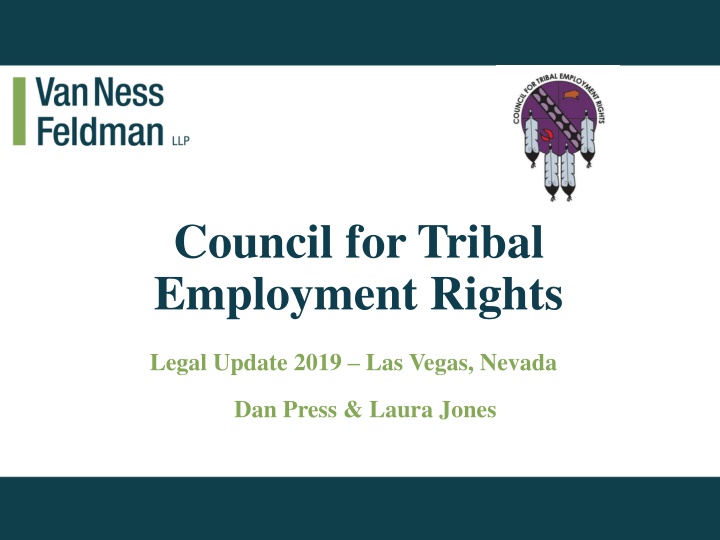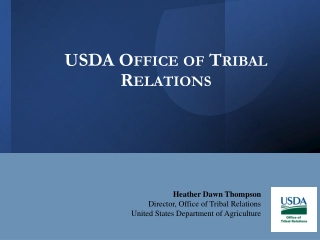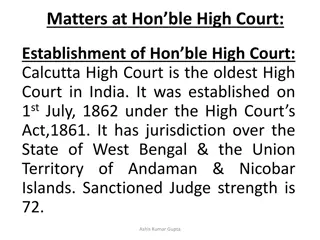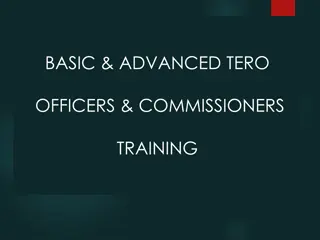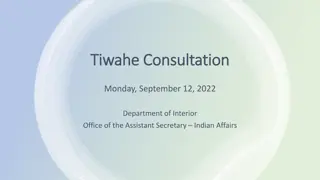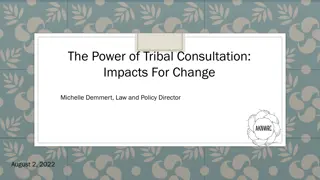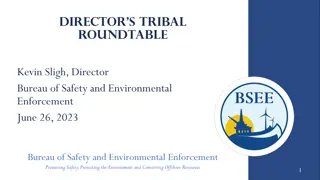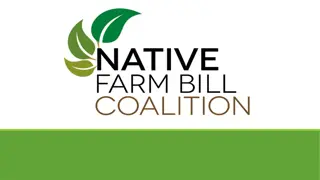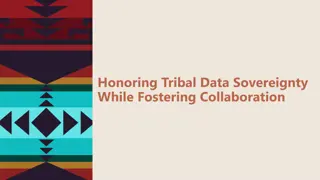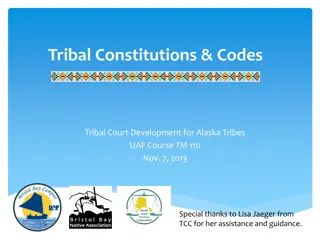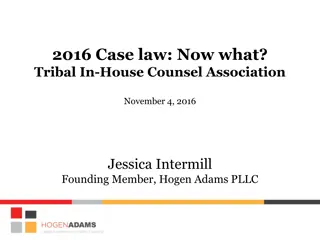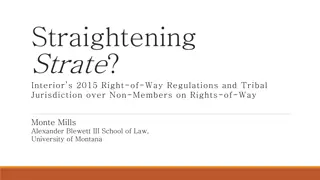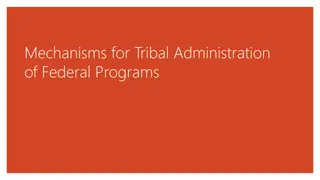Tribal Employment Rights and Jurisdiction: Legal Update 2019
The legal update discusses the basis for tribal employment authority, Indian preference in hiring, tribal jurisdiction over non-Indians, exceptions under the Montana Test, and tribal jurisdiction over rights-of-way. It highlights the sovereign authority of American Indian tribes, statutory recognition of tribal governance, and case law supporting tribal employment rights. The Montana Test outlines when tribes can regulate non-Indians on reservation lands. It also addresses the application of tribal jurisdiction over rights-of-way in the context of state highway projects.
Download Presentation

Please find below an Image/Link to download the presentation.
The content on the website is provided AS IS for your information and personal use only. It may not be sold, licensed, or shared on other websites without obtaining consent from the author.If you encounter any issues during the download, it is possible that the publisher has removed the file from their server.
You are allowed to download the files provided on this website for personal or commercial use, subject to the condition that they are used lawfully. All files are the property of their respective owners.
The content on the website is provided AS IS for your information and personal use only. It may not be sold, licensed, or shared on other websites without obtaining consent from the author.
E N D
Presentation Transcript
Council for Tribal Employment Rights Legal Update 2019 Las Vegas, Nevada Dan Press & Laura Jones
Legal Basis for Tribal Employment Authority Sovereignty o American Indian Tribes are independent political entities, whose sovereign authority existed long before the formation of the United States government. o Tribes possess inherent sovereignty to make their own laws and be ruled by them. Williams v. Lee, 358 U.S. 217, 220 (1959) Statutory Authority o Tribes sovereign right to govern employment issues has been recognized by federal statute, e.g.: o Title VII of the Civil Rights Act of 1964; Americans with Disabilities Act Judicial Case Law o Federal courts have upheld tribes authority to govern tribal employment/tribal hiring preference, e.g.: o Morton v. Mancari, 417 U.S. 535 (1974); EEOC v. Cherokee Nation, 871 F.2d 937 (10th Cir. 1989) 2
Indian Preference A tribe may use its sovereign governmental powers to require employers on its reservation to give preference to Indians if that employer is subject to the tribe s jurisdiction. Foundation for Indian preference in Title VII Title VII contains general non-discrimination principles for employers. But Section 703(i) allows certain employers to exercise employment preference in favor of Indians. Morton v. Mancari, 417 U.S. 535 (1974) Indian preference in hiring is not racial discrimination 3
Tribal Jurisdiction over Non-Indians Montana v. United States, 450 U.S. 544, 565 (1981) General rule that Tribes lack civil jurisdiction/regulatory authority over non-Indians on non-Indian fee land within the reservation. There are two exceptions to this general rule (the Montana Test): 1. A tribe may regulate the activities of nonmembers who enter consensual relationships with the tribe or its members; or 2. A Tribe may regulate the conduct of non-Indians on fee lands within its reservation when that conduct threatens or has some direct effect on the political integrity, the economic security, or the health and welfare of the tribe. 4
Montanas Exceptions are Narrow Montana s limitations only apply to tribes regulation of non-Indians on non-Indian land not on tribal land. New Mexico v. Mescalero Apache Tribe, 462 U.S. 324, 333 (1983): A tribe s power to exclude nonmembers entirely or to condition their presence on the reservation is . . . well established. Montanadid not apply to a case regarding a tribe s regulatory authority over nonmembers on trust land because Montana concerned lands located within the reservation but not owned by the Tribe or its members 5
Tribal Jurisdiction over Rights-of-Way (State Highway Projects over the Reservation) Strate v. A-1 Contractors, 520 U.S. 438, 454 (1997) Auto collision occurred on a road that went through the Ft. Berthold Reservation in North Dakota. The road was built on a right-of-way that was granted to North Dakota and was maintained and controlled by the State. Applying the Montana Test, the Court found that it did not meet either of the exceptions 6
What this means for TERO When thinking about enforcement of Tribal employment authority, it is important to consider whether the Tribe has jurisdiction over the employer For rights-of-way, under the BIA s updated Right-of-Way Regulations that were released in 2016, Tribes can negotiate to ensure that TERO laws and regulations are mandatory for activities that occur on the right-of-way (construction, maintenance, etc) 7
VNF Native Affairs Laura Jones LJones@vnf.com Dan Press DPress@vnf.com 8
